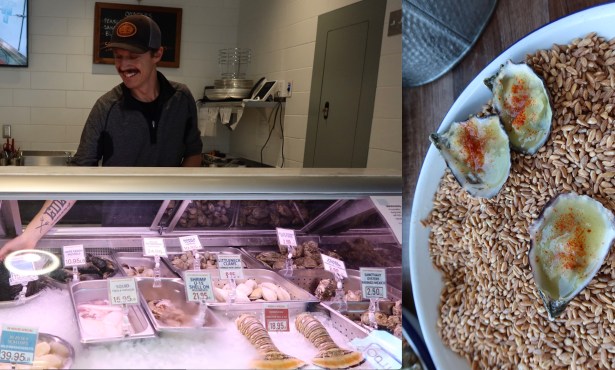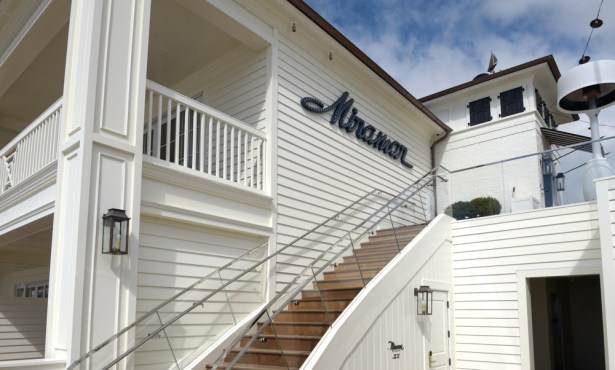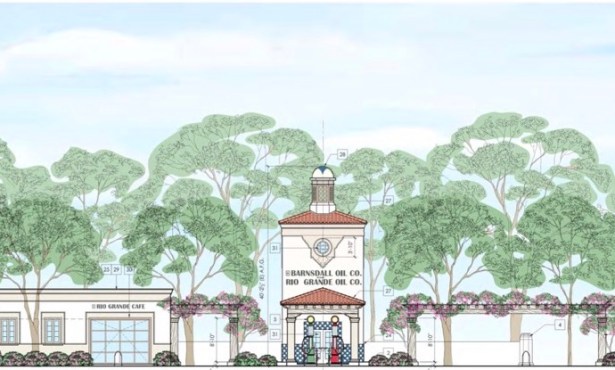Protesters, UCSB Argue Researchers’ Role in War Efforts
Technology: What Is It Good For?
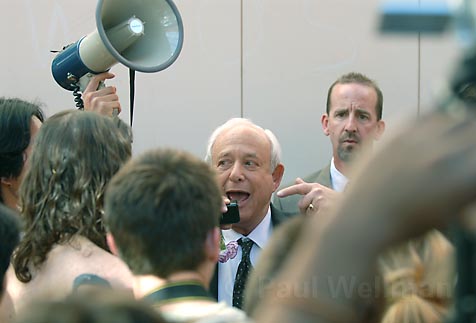
When students protesting the Army Institute for Collaborative Biotechnologies (ICB) convention burst into a party tent where research scientists, high-tech industry representatives, and top Army medical brass were takng a lunch break, several professors sought to assure invaders that the academic/military meet-up was not furthering weapons research. Some of the 300-odd students who were shouting, chanting, standing on tables, dancing, or otherwise creating a disturbance heard that message over the sound of their own uproar, but they didn’t necessarily believe it.
The students who launched the assault at the annual UCSB event at Corwin Pavilion on February 12 were organized by a group calling itself UCSB Students Against War, a group closely affiliated with S.B. Antiwar, a loose coalition of activists focused on obstructing the war effort. Last year, for example, under the banner of the Clandestine International Rebel Clown Army (CIRCA), some of the same students who planned the ICB demonstration took over a CIA recruitment session on campus.
As UCSB student organizer Zack King recalls the CIA action, a recruiter was one minute into his presentation when two protesters walked in. One of them was strapped onto a table and the other proceeded to pour water onto his face in a demonstration of the controversial interrogation technique known as waterboarding. Clown-costume-clad protesters then burst in and, speaking in squeaky voices, disseminated literature about CIA activities that the protesters found morally reprehensible.
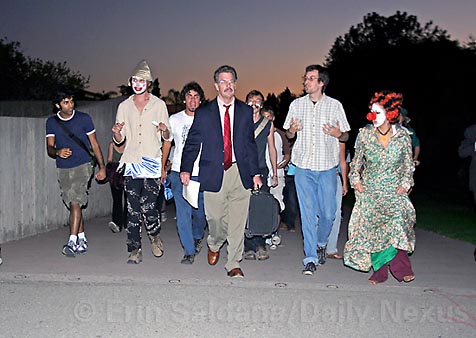
S.B. Antiwar stands apart because in lieu of holding simple, traditional protest marches, it attempts to shine a light on the military-industrial complex, whose presence in Santa Barbara the group has researched to a degree unheard of since the heyday of anti-Vietnam War activism. During the ’70s, protesters targeted the downtown Santa Barbara offices of military think tank General Electric Tempo. One S.B. Antiwar flyer lists companies alleged to be military contractors alongside more than 100 street addresses in Goleta and Santa Barbara where the companies have offices or labs. Following the ICB protest, the next event listed on the S.B. Antiwar Web site was a workshop covering “basic skills and tools to learn about corporations, the military, and universities.”
That workshop should have been held before the ICB protest, which aimed at the wrong target-or so says a UCSB scientist who receives ICB monies but who spoke anonymously for fear that protesters would bother his family. According to him, all ICB research-like any research conducted on the UCSB campus-is unclassified and subject to publication and export. Indeed, under the terms of the University of California’s contract with the Army, there can also be no restriction on the nationality of its researchers. This would seem to indicate that the research is benign enough that the U.S. military isn’t concerned about the enemy having access to it. The program does not seem to be shrouded in secrecy: The ICB Web site displays a photograph of UCSB’s Elings Hall, accompanied by a description of its labs and directions to offices. Though the Army funds ICB, anybody can use it, as chemical engineering professor and ICB director Frank Doyle tried to explain to protesters. It is research for medical and defensive purposes, he said-not for killing people, but for saving them.
On the other hand, there is no disclaimer on the ICB Web site stating that the work professors are doing-at the behest of the military and in consultation with corporations that do indeed make weapons of war-is not weapons-oriented. And it is certainly not obvious from the Web site’s descriptions what the applications of ICB’s research might be, as this text is written in language not readily decipherable by people outside the realm of graduate science studies.
According to UCSB, the research is pure science and a thing of beauty: One scientist studies abalone shells with a view to creating materials that, like shells, self-assemble. Five research teams are studying bio-molecular sensors, materials and energy, tools, cognitive neuroscience, and networks. This last area includes intercellular communication in microbes, “particularly with relevance to pathogenesis.” Although that sounds like biological warfare, the UCSB scientist explained that microbes’ disease-causing properties are being looked at merely as a potential model for resilient systems of military command.
It does not take too much imagination to dream up nightmarish scenarios involving self-assembling mechanisms equipped with remote sensors capable of cellular communication. And according to an ICB pamphlet passed out by protesters on February 12, the ultimate purpose of ICB’s four teams is to address the needs of the Army Future Combat System, a $164 billion project “comprised of weapon systems and informational networking technologies.” UCSB is slated to receive $50 million of project funds over five years. Private industry and other University Affiliated Research Centers, some of which do explicitly engage in weapons research, also receive a piece of that funding.
So far, discourse between the antiwar activists and the UCSB researchers has been conducted indirectly, mostly by way of bullhorns. Protesters laughed at one researcher’s attempt to explain over the February 12 hubbub that his work would enable doctors to place a microchip in human brains to determine what was wrong with them. At least one student shouted in response, “I don’t want a chip in my brain!” It was the ICB researchers’ turn to scoff when community advocacy group Santa Barbara Indymedia posted an account of the February 12 protest that implied UCSB researchers had helped develop the bomb that detonated at a 2002 Afghan wedding, killing an estimated 48 civilians. ICB was instituted in 2003.
After the protest, there was disagreement among students about whether they should have carried signs signifying that they did not object to research meant to protect soldiers. The prevailing perspective, though, according to King, was that even innovations allowing American soldiers to operate in relative safety “are still making the war possible, are still making the university complicit in the war.” King added that it is hard even for UCSB’s Nobel Laureates to know whether their research is weapons related, saying, “Look at the Manhattan Project, where each researcher was working on his own part of [the atomic bomb] without knowing what they were making. They are selling out UCSB talent with no way to tell how the military is going to use the research.”

